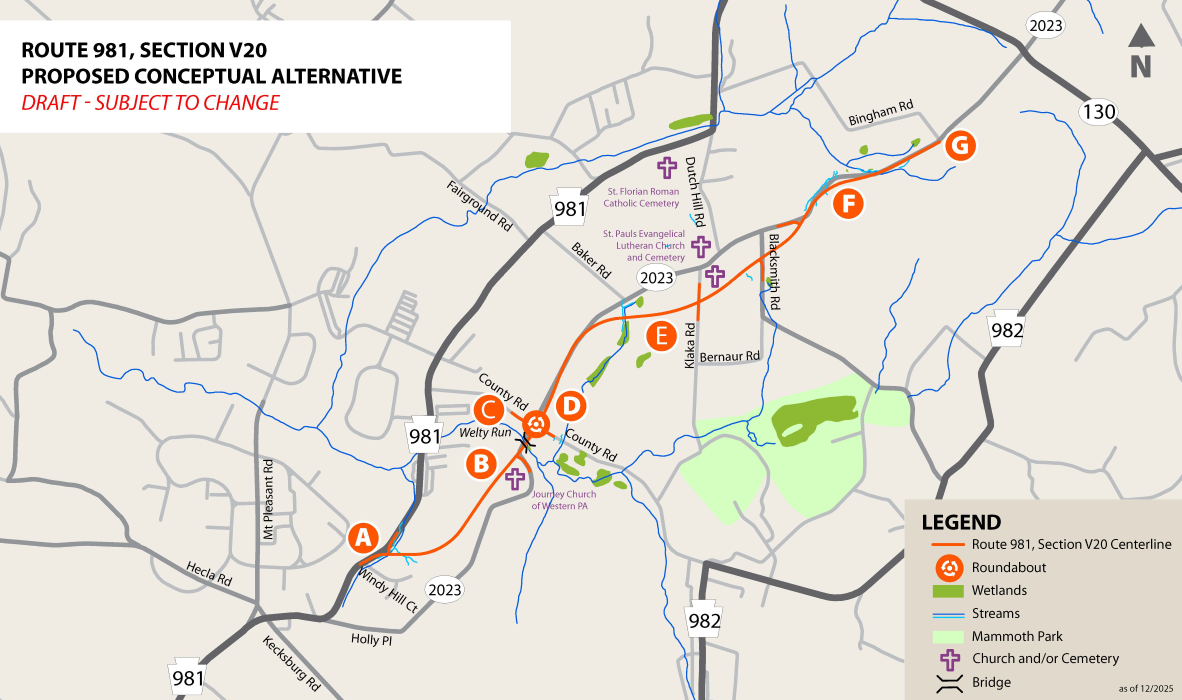The environmental resources surrounding the project area are an important part of overall project development. Once the Project Team refines the alignment, they will prepare and submit the environmental document for approval by the Pennsylvania Department of Transportation (PennDOT) and the Federal Highway Administration (FHWA).
Some of the key environmental features that the Project Team identified during their research, field work, and interviews include:
- Wetlands & Streams
- Historic Structures
- Archaeology
- Agricultural Land
- Hazardous Waste
PennDOT is required to follow NEPA on any federally funded project. NEPA compliance requires environmental resources to be evaluated using one of three types of environmental documentation. The level of documentation is determined based on the complexity of the project. Section V20 of the LVTIP requires the completion of a Categorical Exclusion (CE) environmental document during Preliminary Design. A CE is used by PennDOT when, due to the project type, complexity or area of impact, potential impacts are not expected to be significant in a project area. The studies and fieldwork required for the CE are currently underway.
The Pennsylvania Transportation and Heritage (PATH) system is an online database and communication tool to facilitate consultation between PennDOT and the public on cultural resources that may be affected by its projects. PennDOT is required by federal and state law and regulation, including Section 106 of the National Historic Preservation Act, to consider the effects a project may have on historic properties and to consult with individuals and groups concerned about these potential effects.
This system provides online and instant access to all documents produced, and findings made, for all active projects, and many completed projects. The public can use this database to find projects in your area, the status of consultation, and cultural resource documentation produced on those projects to date. Anyone can sign up to hear about specific projects in their area, or specific types of projects, and can provide input to assist PennDOT in evaluating ways to avoid or minimize effects to historic properties; where adverse effects cannot be avoided the public can provide input to assist us in evaluating ways to mitigate for those effects.
View Route 981, Section V20 on PATH


